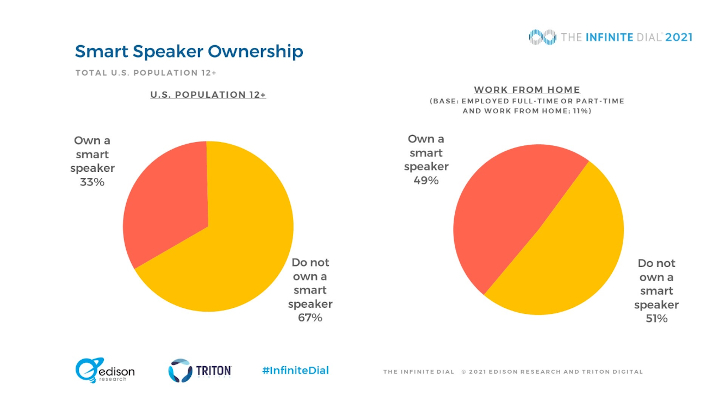Publication of the latest The Infinite Dial report by Triton Digital and Edison Research is nudging the series to the quarter-century mark, with the first release taking place in 1998. The current edition tracks media consumption in a year that was full of surprises. A recent online presentation hosted by Tom Webster, senior vice president at Edison Research and John Rosso, president of market development at Triton Digital, summarized this year’s key findings.
The broad view of 2020, according to Webster and Rosso, is that all media took a hit during the disruptive period starting in March, with layoffs, lockdowns and many beginning to work from home. The good news is that by January 2021, when The Infinite Dial’s telephone survey of 1,507 people was taken, things had pretty well returned to normal, with the expected growth being seen in most areas.

Smartphone ownership experienced rapid growth from the time of its introduction in 2009 through 2017, when it began to plateau as the market approached saturation. Nevertheless, the numbers went from 85 million owners in 2019 to an estimated 88 million in 2021. Webster and Rosso speculate that this increase may have been driven largely by Apple’s introduction of the second generation iPhone SE in April.

Not all devices are enjoying an uptick in popularity, according to Triton and Edison’s data. Tablet ownership peaked at 56% of the U.S. population in 2019, and has since declined to an estimated 51% for the current year. At the same time, the data suggests that internet-connected watch ownership seems to have hit a plateau. In 2018 and 2019, 17% of the U.S. population owned one, and the estimated number only rose to 18% for 2021.

In the no-big-surprise department, smart speakers seem to have had another good year. The Infinite Dial’s numbers suggest that ownership jumped from 27% in 2020 to an estimated 33% for this year. Webster and Rosso add that the researchers dug a bit deeper to try and understand why there was this much growth. When this same question of ownership was asked of those who are employed full- or part-time and work from home, the number jumped from 33–49%. Correlation, as they say, is not causation, but it makes one wonder if the economic upheaval of 2020 might not have had a positive effect on smart speaker sales.

Further signs of smart speaker growth, according to The Infinite Dial 2021, may be found in data on number of smart speakers in a household. In 2018, the first year that numbers were collected, 67% of respondents owned one smart speaker, 22% owned two, and just 11% owned three or more. Ownership for the current year is 47% owning one, 19% with two, and 34% with three or more. Webster and Rosso posit that this data suggests many first-time buyers are starting out with two or more smart speakers.







